Textured, contemporary, geometric or traditional? For colour, pattern and enduring tile style, here’s what’s hot for walls and floors
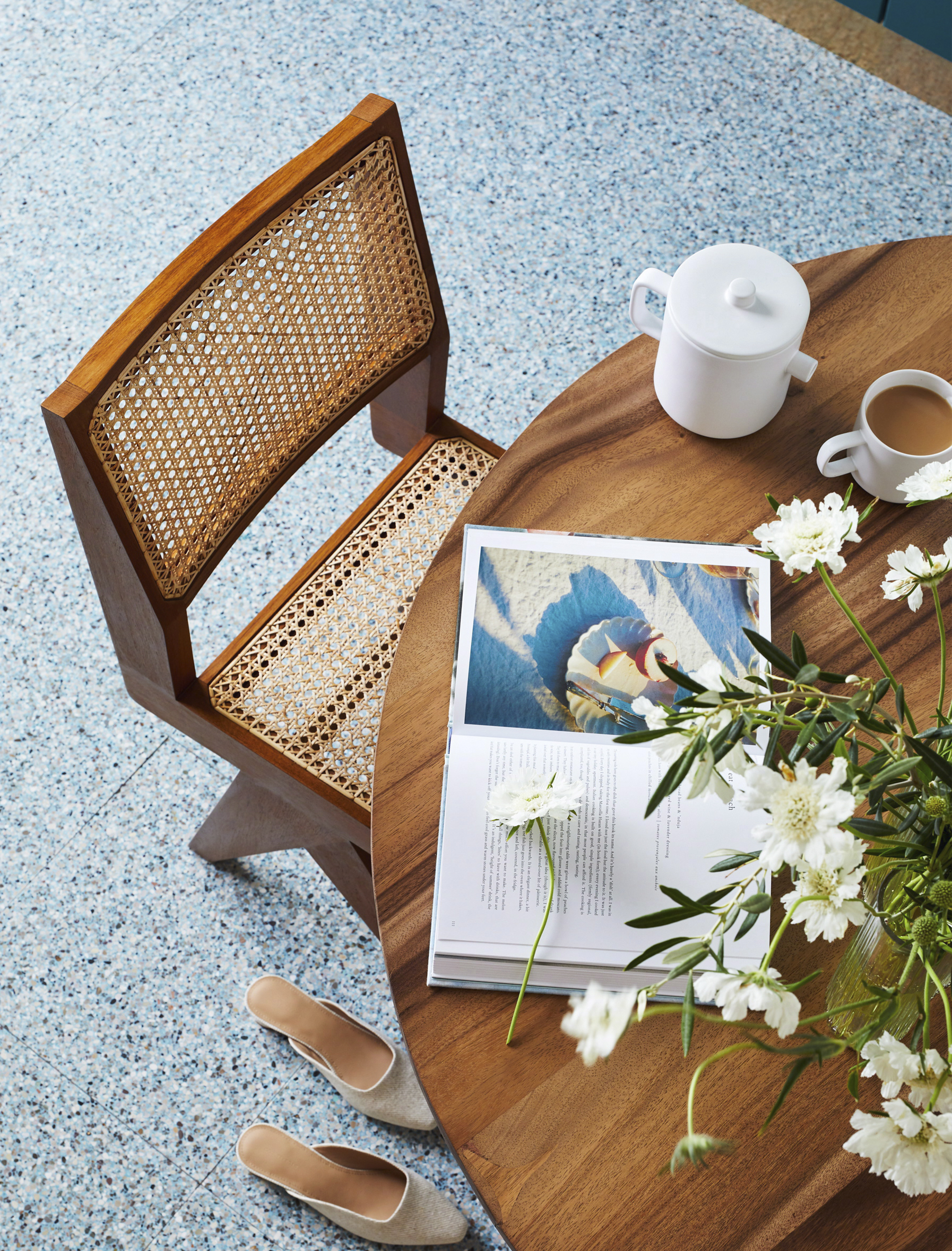
Kiwis have traditionally used tiles for the wet areas of their homes, but these days they’re installing them elsewhere too. It’s a trend that’s growing as home and business owners look for attractive, durable and low-maintainance floor, wall and outdoor options that also express their individuality and creativity.
New territory
You only need to look at homes in Europe to know that tiles are enduring. And now Kiwis are catching on, tiling areas other than traditional bathrooms, kitchens, laundries and entrances.
“Tiles that lasts for generations are the ideal flooring, says Anna Williams, marketing manager at Tile Warehouse. “Not only do they offer limitless designs, but they also provide the convenience that generations have relied on.”
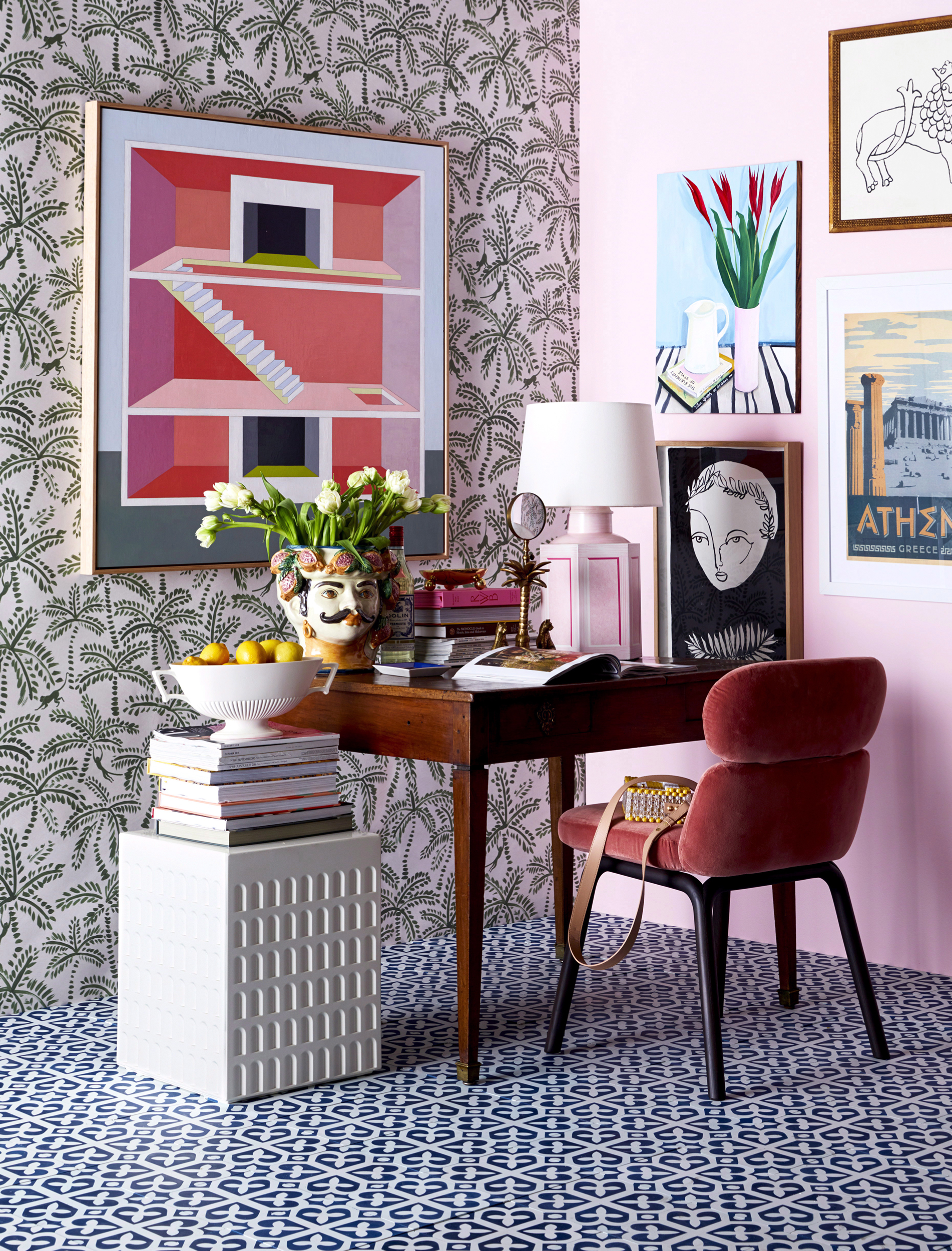
Style tip If you think tiles are too cool on your tootsies, think again. Under-tile heating is an easy, affordable way to heat a room.
She says architects and engineers are recommending tiles to both residential and commercial customers because they provide passive warmth through thermal mass – where heat moves from warmer to cooler surfaces.
There are two main tile types: porcelain and ceramic. Typically, says Anna, floor tiles are porcelain, which is more dense and durable, and wall tiles are ceramic. The latter can offer aesthetic beauty that cannot be achieved on more homogenous porcelain.
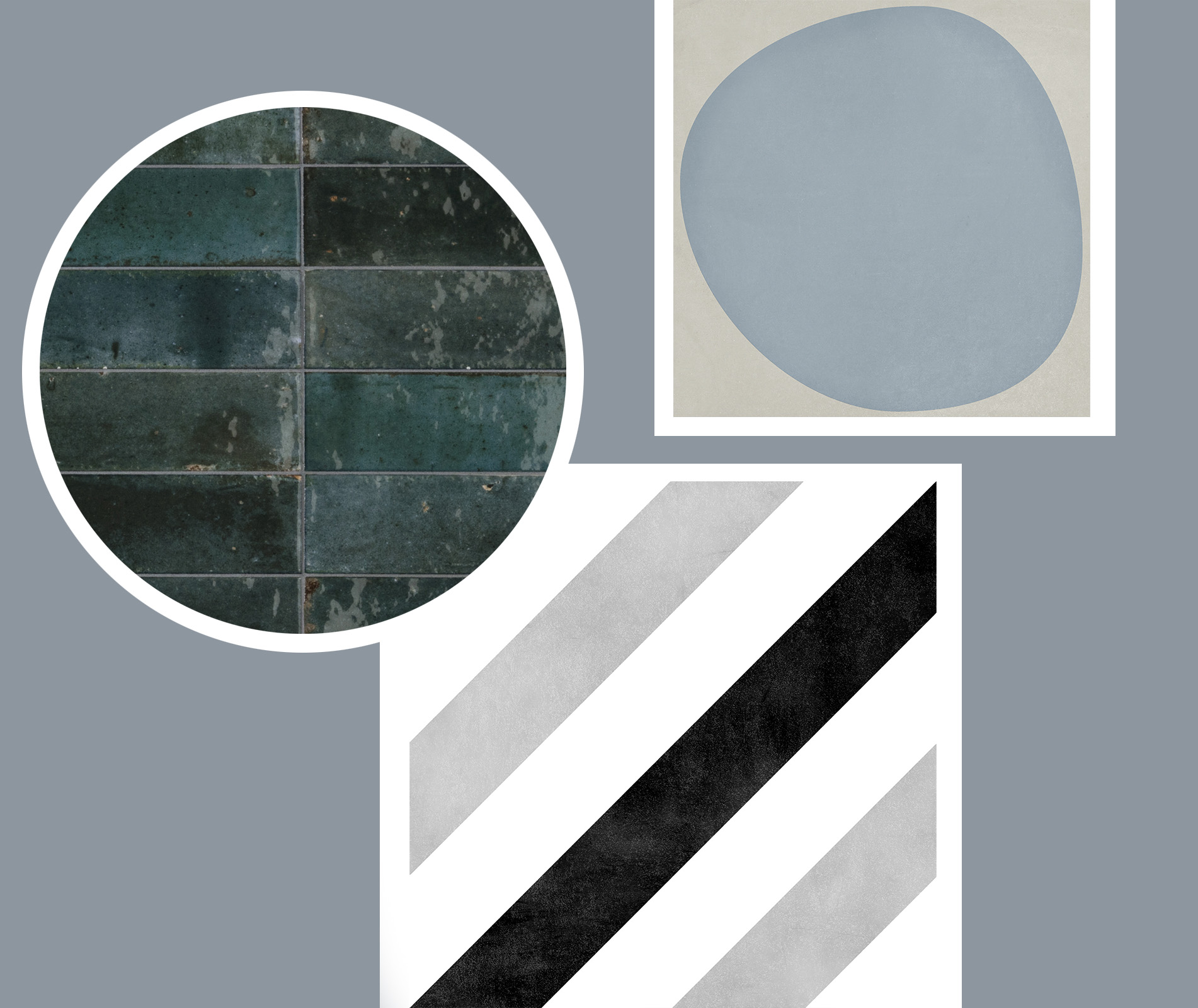
(Clockwise) 1. Lume blue tiles, $149.50 per sqm, from Tile Warehouse. 2. Futura blue drop tile, $195 per sqm, from Tile Space. 3. Frame Decor Stripes tile, $106 per sqm, from Tile Warehouse.
Peter Roberts, managing director of Tile Space, says 70-80 percent of tiles are now floor-grade, which means they can also be used on walls.
He says as well as being durable and long-lasting – “just look at Pompeii” – tiles are easy to clean and maintain, and allow for creativity. And shade variations, graded from V1 (little variation) to V4 (lots of variation), mean clients can choose to have a uniform result right through to a more rustic, varied look.
Buy and large
A developing story for 2021: tiles are getting bigger. “This has been happening consistently, and now manufacturers are making them 1200mm x 2700mm – and even
bigger,” says Peter.
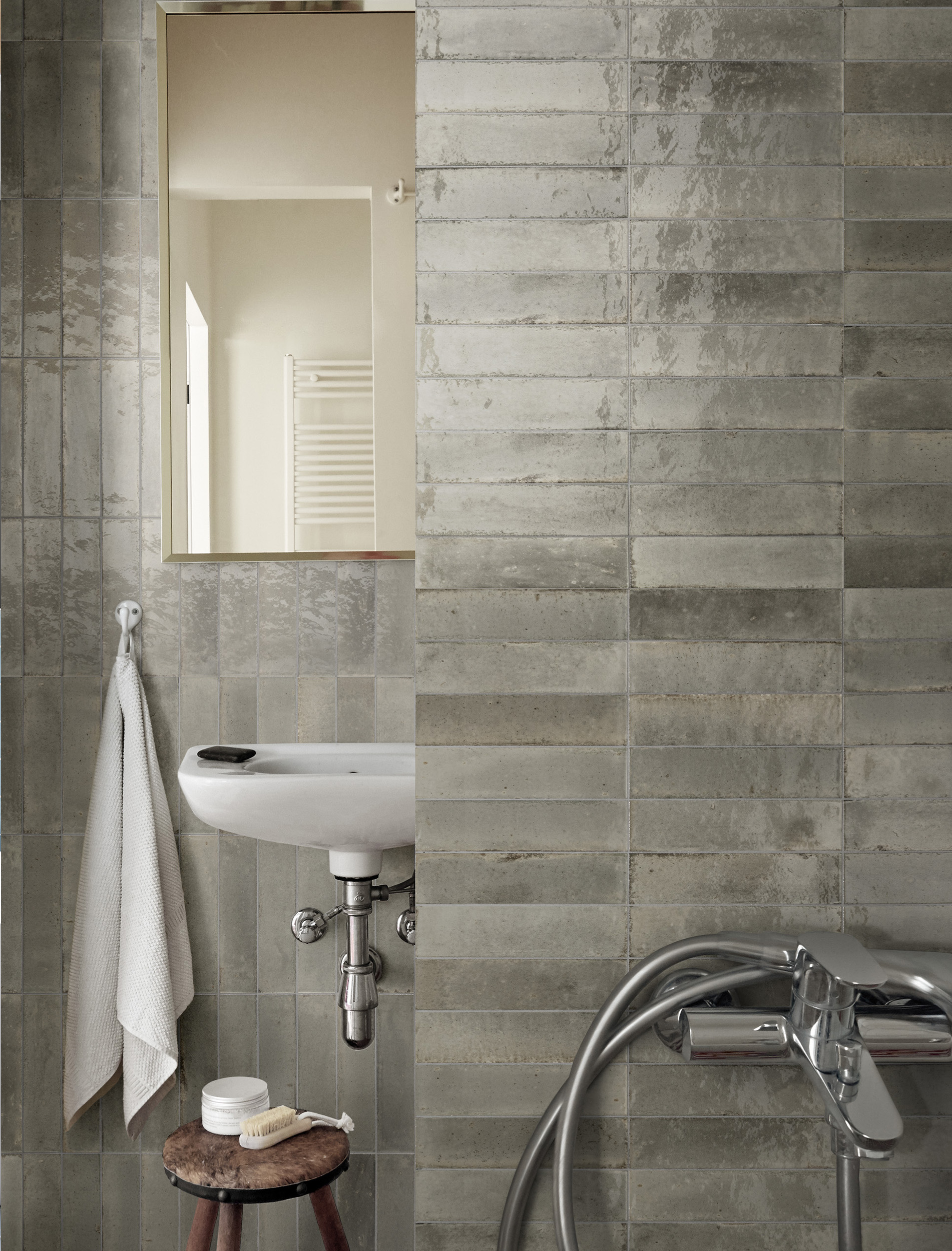
Interior designer Wendy Goode of Auckland-based Goode Interiors, says the XL Laminam, a “full-body Italian porcelain slab” is 1620 x 3240mm. “Large-format is the new trend out of Europe,” according to Anna, who says buyers shouldn’t automatically discount big tiles for little spaces. “A small room can benefit from a large tile. With fewer grout lines, the walls and floor are less cluttered and the room expands.”
That’s not to say small tiles are out of vogue. “Smaller tiles have their place too. If you’ve fallen for some beautiful mosaics, you can mix it up a bit by using different-sized tiles in different zones of your bathroom.” You can use smaller tiles for the shower, larger format for the majority of the room and mosaic tiles in alcoves or recesses.
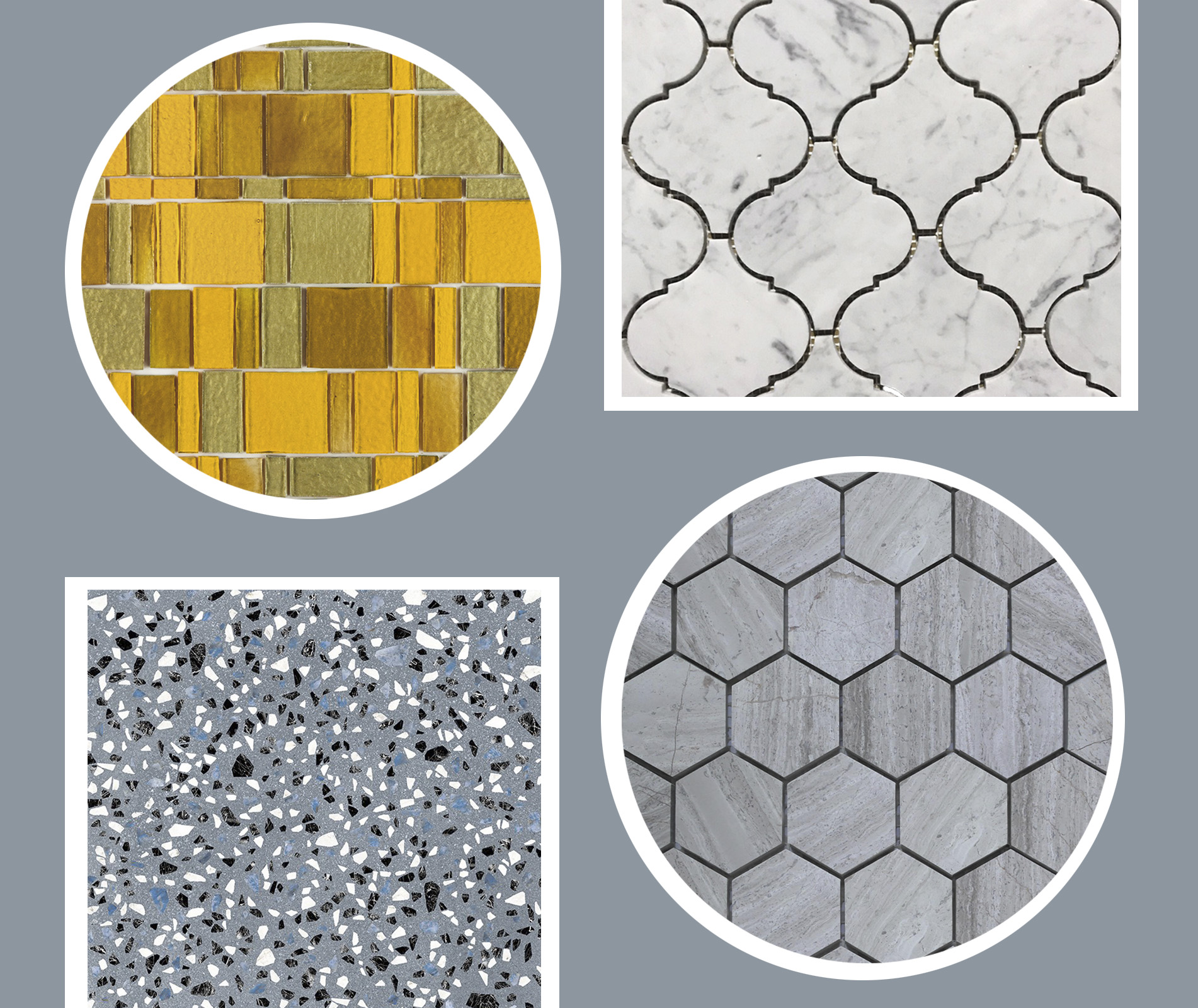 (Clockwise) 1. Liberty Ochre glass mosaic tile, $550 per sqm, from Tile People. 2. Carrara Arabesque tiles, $24 per sqm, from Tile Warehouse. 3. Wooden white mosaic tiles,$20.96 per sheet, from Tile Warehouse. 4. Medley blue Classic tile, $120, from Tile Space.
(Clockwise) 1. Liberty Ochre glass mosaic tile, $550 per sqm, from Tile People. 2. Carrara Arabesque tiles, $24 per sqm, from Tile Warehouse. 3. Wooden white mosaic tiles,$20.96 per sheet, from Tile Warehouse. 4. Medley blue Classic tile, $120, from Tile Space.
The Pantone colours of the year are a yellow (Iluminating) and a grey (Ultimate Gray), so expect to see tiling that reflects these shades. Another emerging trend, Anna says, is connecting with nature. This is achieved with muted tones that blur the borders between inside and out, architecture and nature.
Wendy says natural looks – stone, timber, marble and cement – are still popular but she is starting to see mixed sizes, modular looks and terrazzo. Also, stacked subway tiles are being laid vertically.
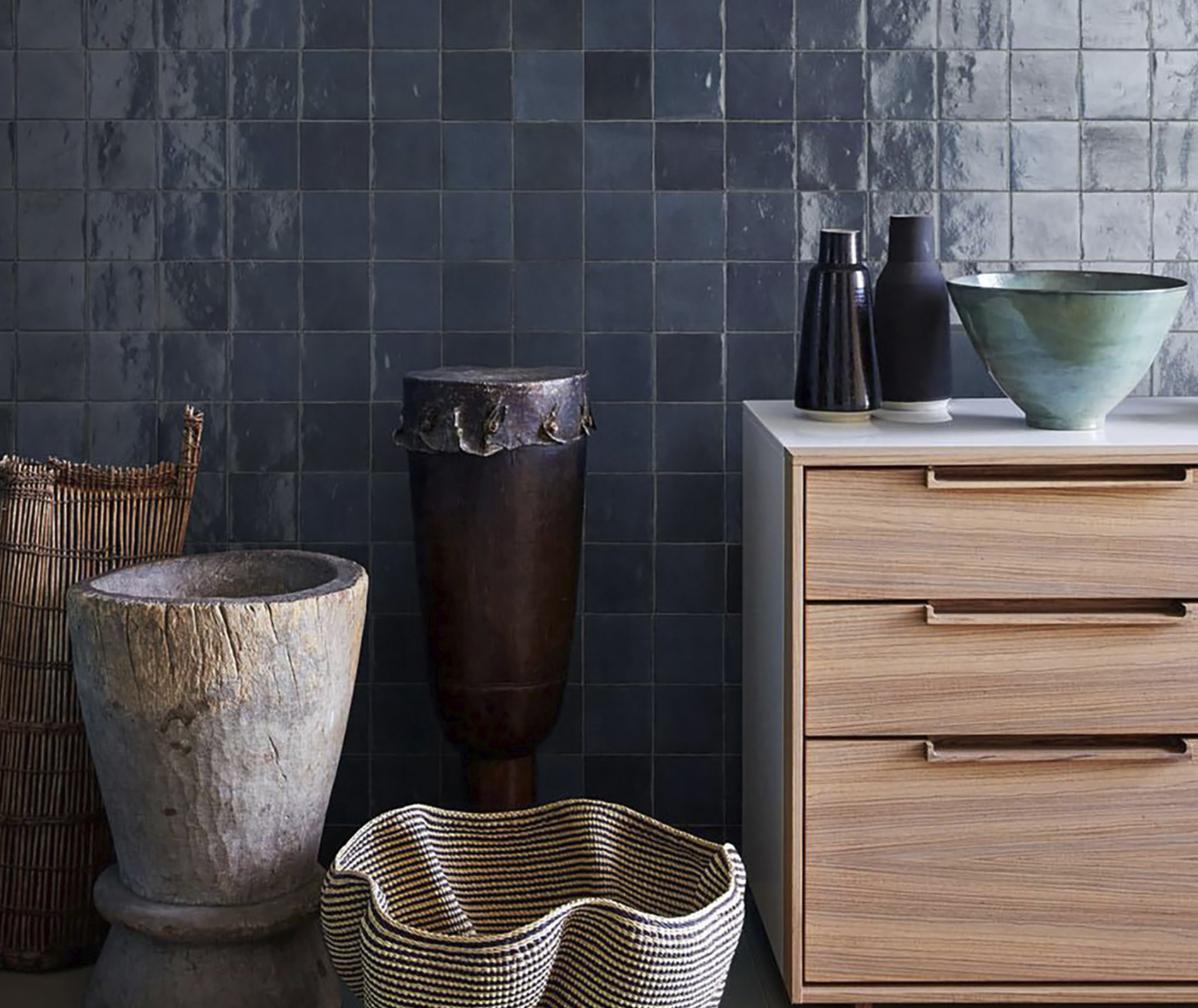
Style tip Darker tiles will give your bathroom a warm and cosy feel. Lighter tiles reflect light and work well in a smaller room.
Kiwis are often cautious with bathroom tiles and opt for neutral tones, says Wendy. “So when I met a lovely Russian lady who said she liked colour, I got excited. The finished bathroom and ensuites were a combination of small and large square tiles, rectangular wall tiles and mosaics in red, orange, yellow and off-white. They looked stunning.”
Best-laid plans
It’s not always a matter of putting the tiles you want where you want. “Exterior tiles are required to be anti-slip and there is usually a separate section in your local tile shop showing the range,” Wendy says. “Matte tiles are great for high-use bathroom areas, particularly where there are kids.
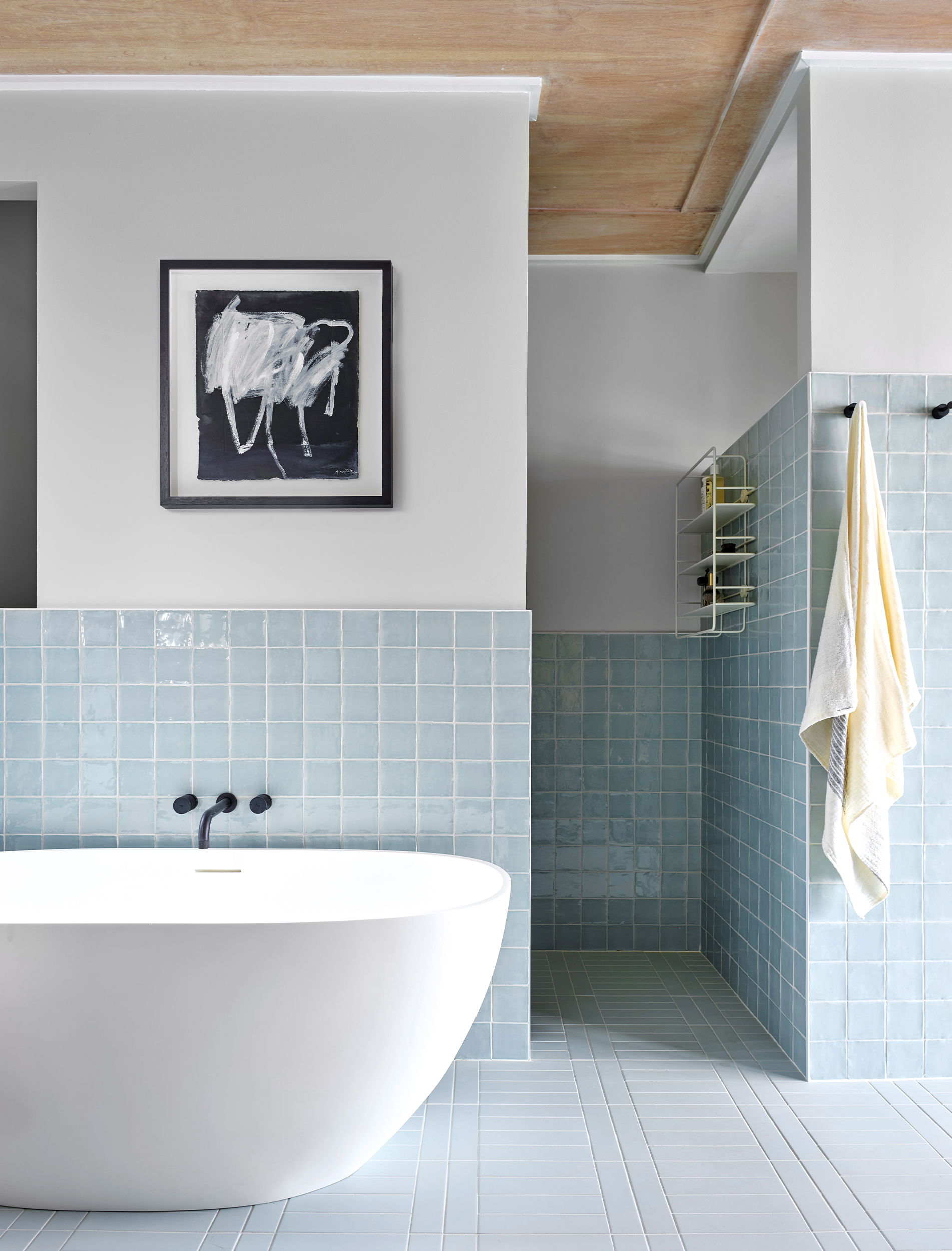
Lappato, she says, are semi-polished and not as slippery as a gloss tiles and can be used in bathrooms and main floor areas. With gloss, “I’d generally only use these on
the walls or in a main bedroom ensuite due to them being more slippery under foot.”
Floors, says Peter, must be flexible enough for the tiles and the wall substrate must also be suitable. “Talk to your builder or tiler. With walls, it’s weight; with floors, it’s flexibility.”
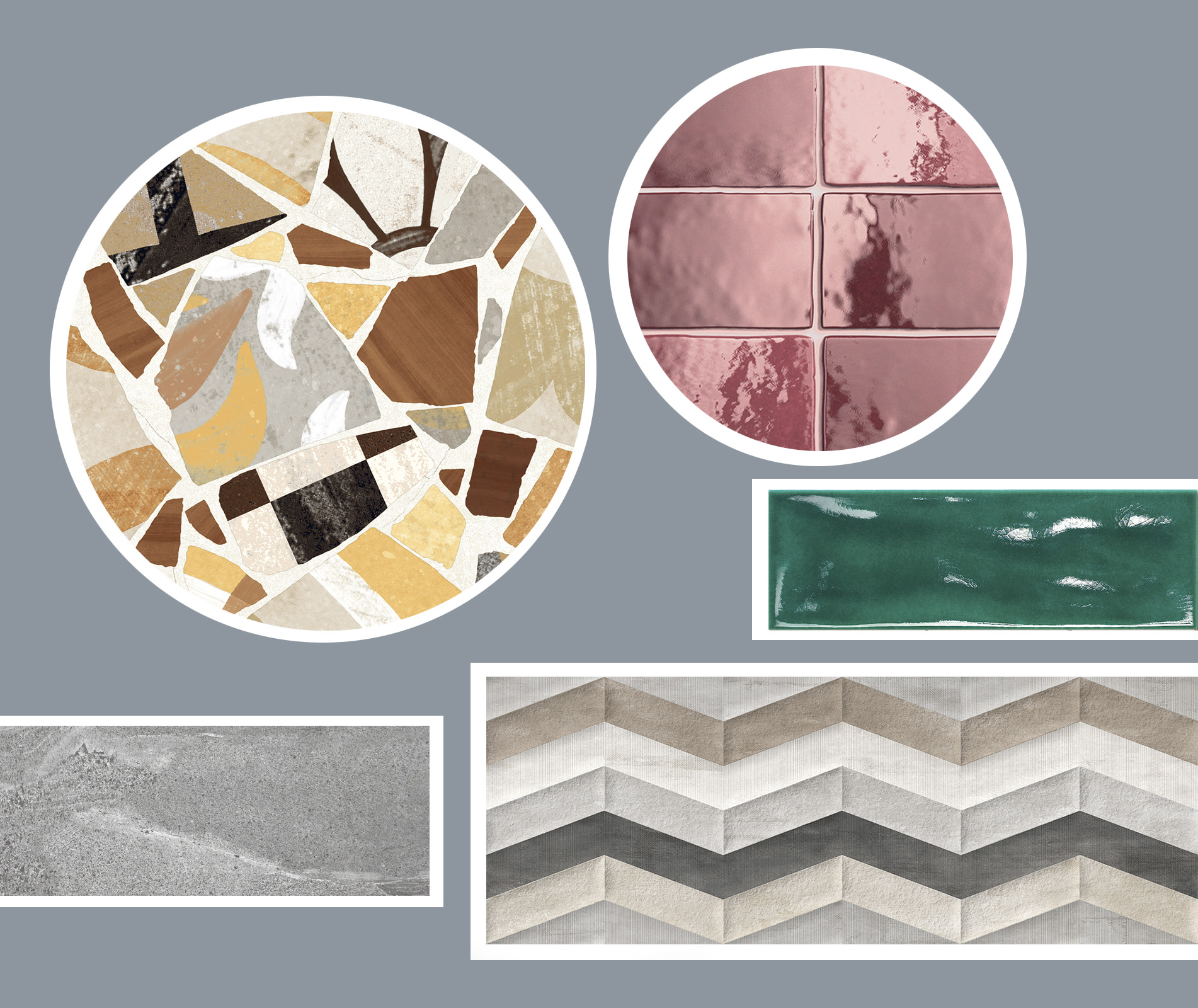 (Clockwise) 1. Ceramica Fioranese Cementine Cocci Orca tile, $140 per sqm, from Tile People. 2. Artisan burgundy tiles, $110 per sqm, from Tile Space. 3. Krakle Verdone tile, $119.60 per sqm, from Tile Warehouse. 4. Art Stone Paint in three colours tile, $94.90 from Tile Depot. 5. 2cm Sandstone Grey Bullnose tile, $34.90 per sqm, from Tile Depot.
(Clockwise) 1. Ceramica Fioranese Cementine Cocci Orca tile, $140 per sqm, from Tile People. 2. Artisan burgundy tiles, $110 per sqm, from Tile Space. 3. Krakle Verdone tile, $119.60 per sqm, from Tile Warehouse. 4. Art Stone Paint in three colours tile, $94.90 from Tile Depot. 5. 2cm Sandstone Grey Bullnose tile, $34.90 per sqm, from Tile Depot.
It’s important to note, he says, that bathrooms require special products and equipment, and waterproofing work needs to be signed off by someone qualified.
He also suggests that when choosing tiles, buy extras. This means repairs can be carried out, or extra surfaces laid with tiles from the same batch.
Words by: Fiona Barber. Photography by: Are Media.
EXPERT PROJECTS

Create the home of your dreams with Shop Your Home and Garden
SHOP NOW











